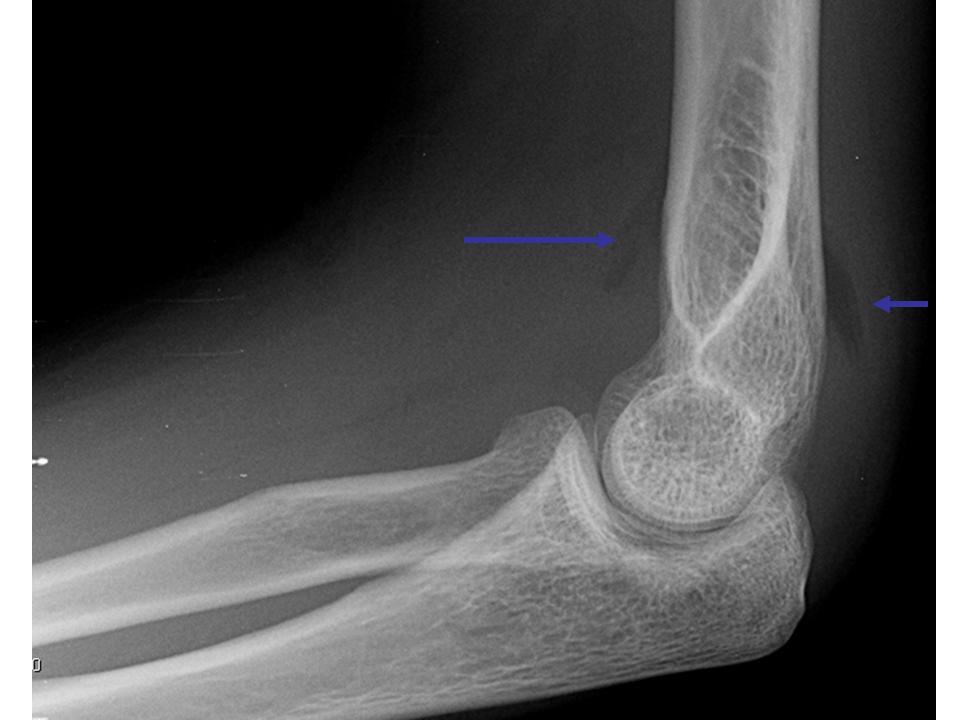Elbow Case 2 Diagnosis
Occult Radial head fracture
Diagnosis
Diagnosis is made with plain radiographs, an AP and true lateral view of the elbow. However, even with multiple views, nondisplaced radial head fractures can be very subtle and the fracture line may occasionally not be visible on the initial radiograph. The diagnosis should still be suspected, however, in adults in the setting of certain soft tissue abnormalities.
There are intracapsular fat pads in the elbow joint. Distension of the elbow joint (which in the setting of trauma is assumed to be from blood from an intraarticular fracture) will displace the fat pads from their normal location and have characteristic radiographic appearances.
The anterior fat pad is normally identified on a true lateral radiograph as a triangular radiolucency abutting the joint. In the presence of joint effusion, this fat pad is displaced superiorly and anteriorly, and the anterior margin becomes convex, similar to a billowing spinnaker sail. The presence of this "sail sign" indicates effusion.
The posterior fat pad is not normally visible radiographically, and its visualization also signifies effusion and is always an abnormal finding.
In the setting of acute trauma without visible fracture in an adult, the usual etiology of effusion is an occult radial head fracture. Fat pad signs may not be evident if the fracture is extracapsular.
